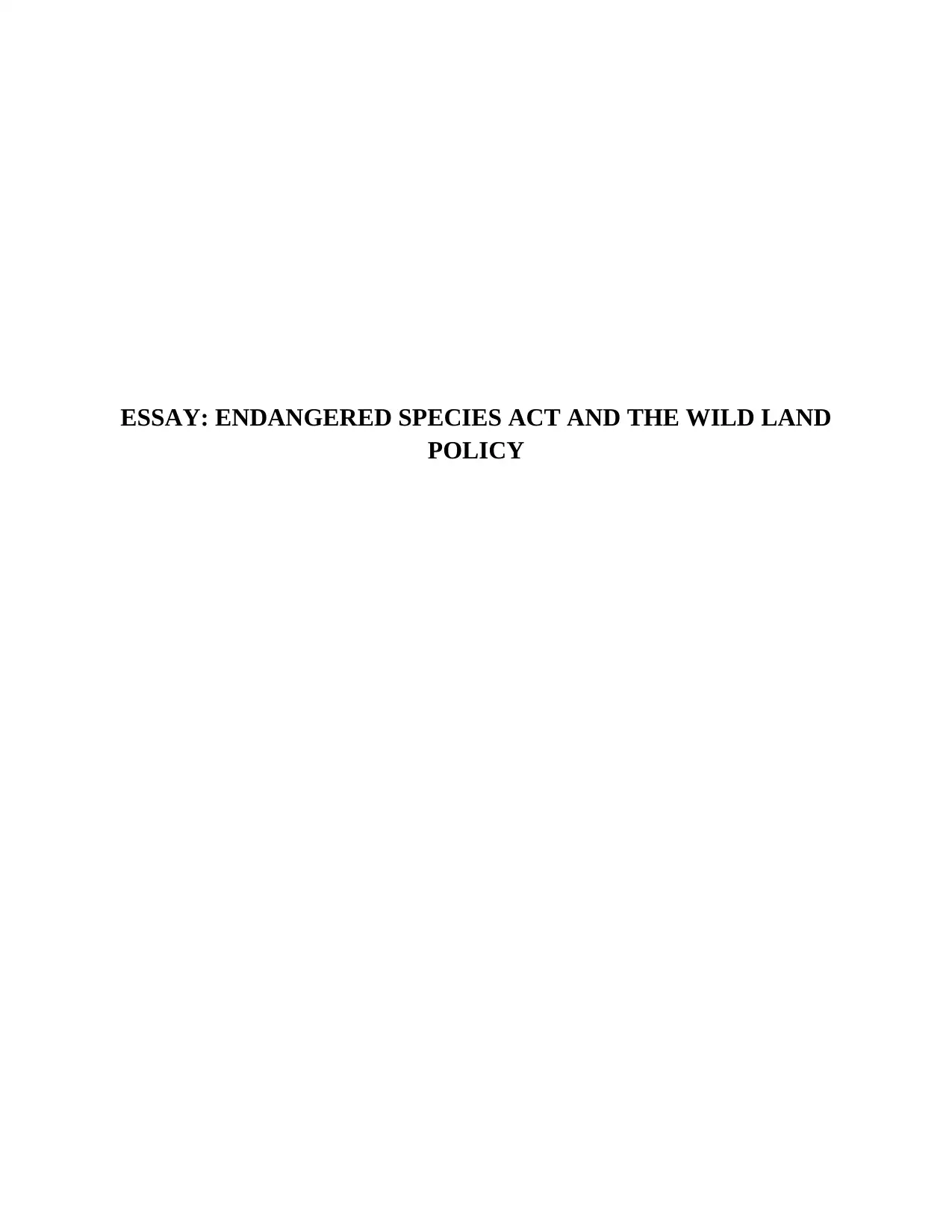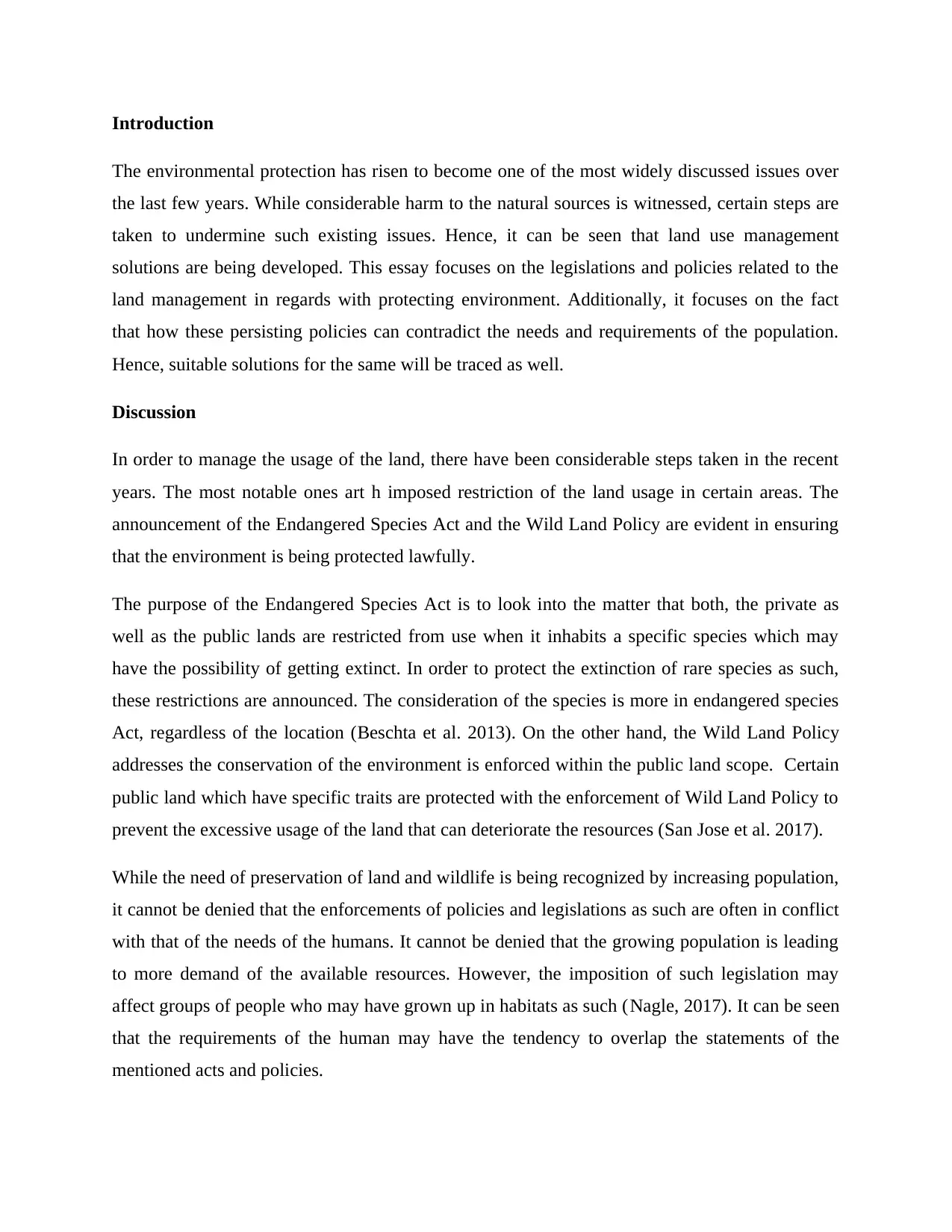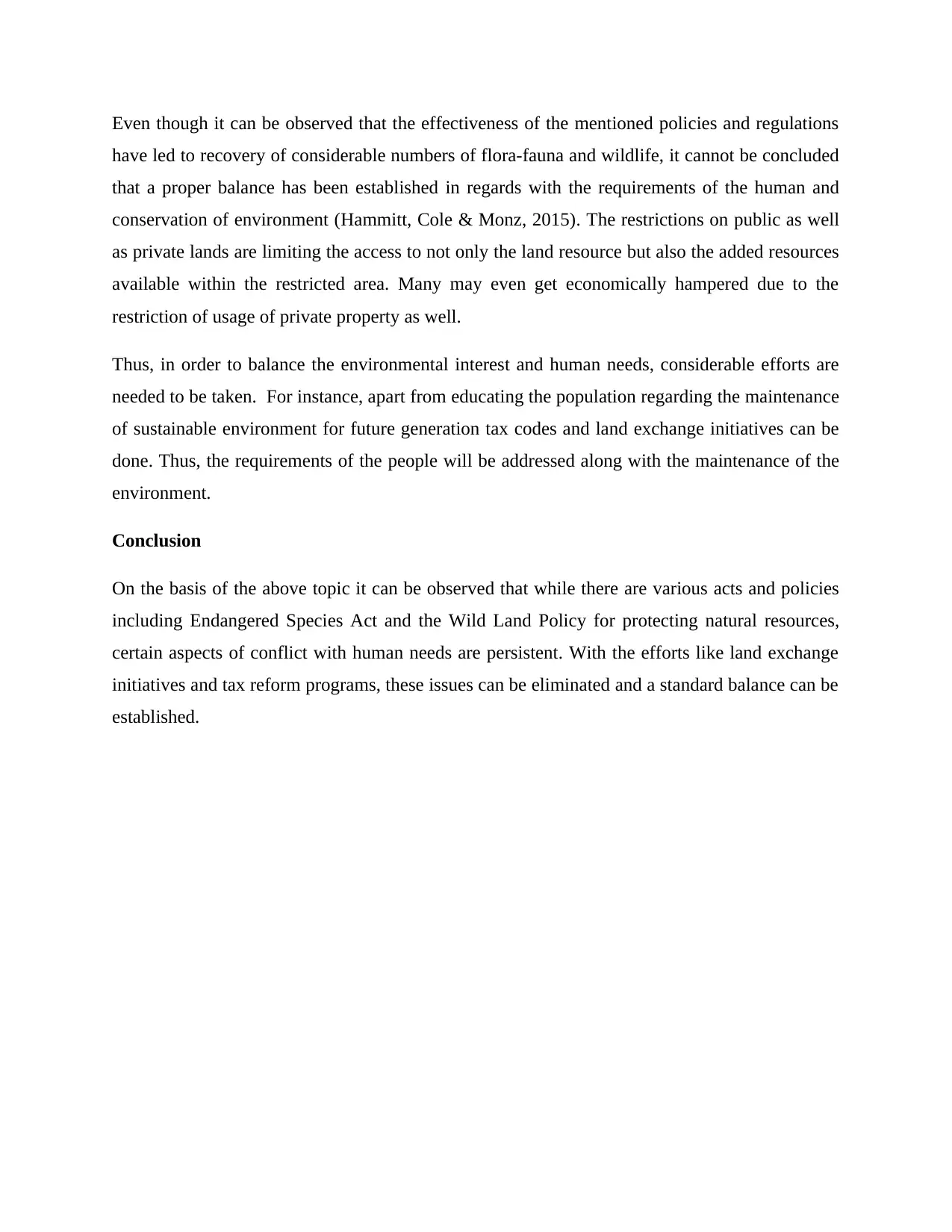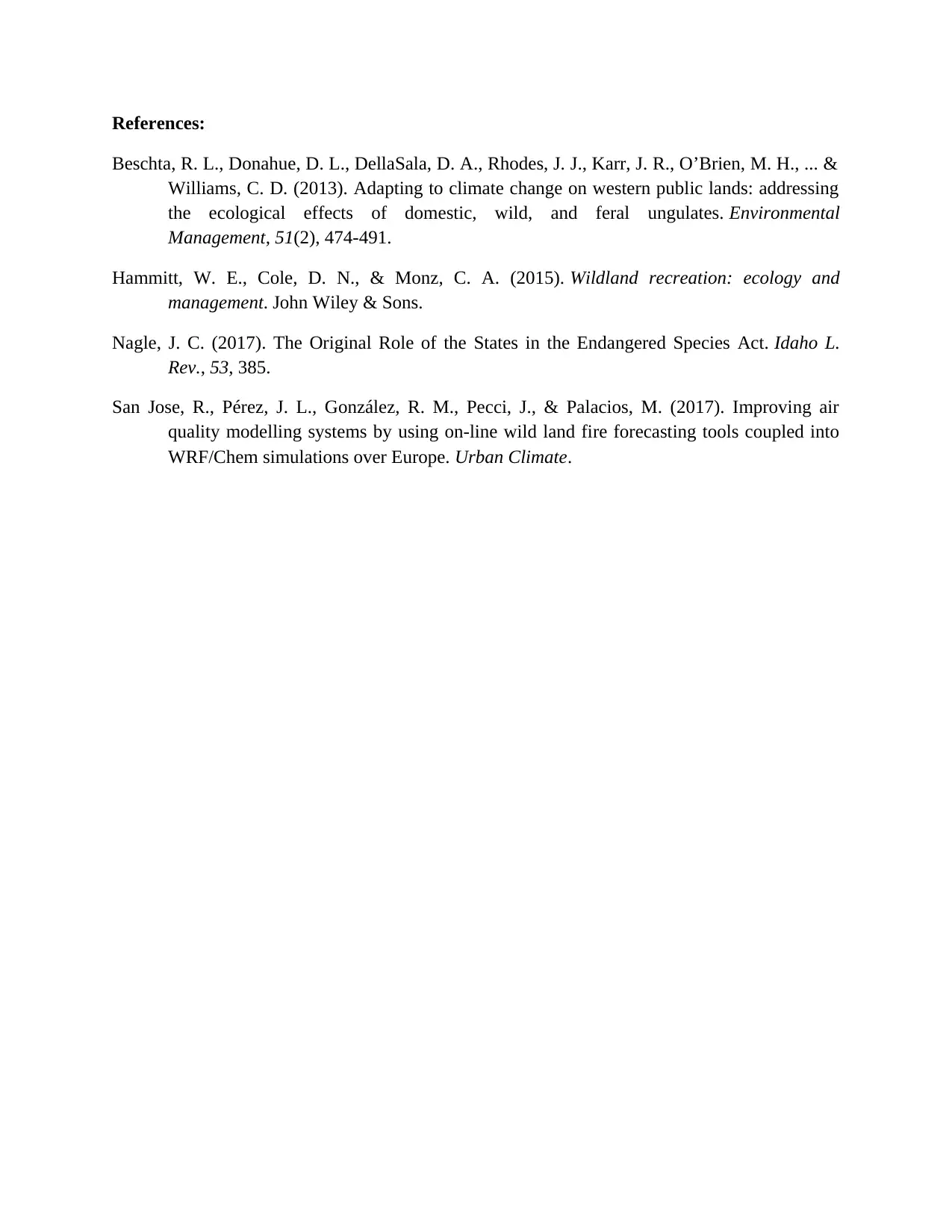Essay: Endangered Species Act, Wild Land Policy, and Land Management
VerifiedAdded on 2020/04/07
|4
|872
|879
Essay
AI Summary
This essay delves into the Endangered Species Act and the Wild Land Policy, examining their roles in environmental protection and land management. It highlights the restrictions imposed on both public and private lands to safeguard endangered species and conserve natural resources. The discussion explores potential conflicts between these policies and human needs, particularly concerning resource access and economic impacts. The essay acknowledges the effectiveness of these policies in wildlife recovery but emphasizes the need for a balanced approach. It suggests solutions such as land exchange initiatives and tax reforms to reconcile environmental interests with human requirements. The conclusion reinforces the importance of balancing environmental conservation with human needs and suggests further efforts for sustainable environmental maintenance.
1 out of 4







![[object Object]](/_next/static/media/star-bottom.7253800d.svg)